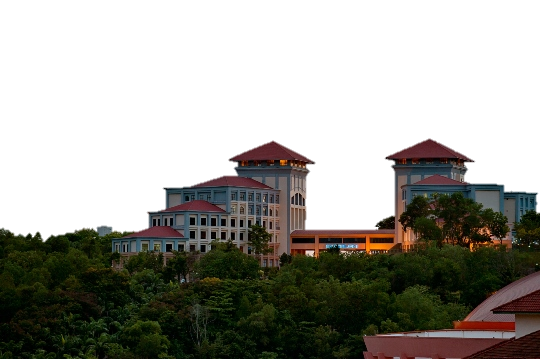 Head of State Tun Juhar Mahiruddin and his consort Toh Puan Norlidah R.M. Jasni spent time with the staff and students of Universiti Malaysia Sabah (UMS) during a fast breaking ceremony at the UMS Islamic Center on Saturday.
Head of State Tun Juhar Mahiruddin and his consort Toh Puan Norlidah R.M. Jasni spent time with the staff and students of Universiti Malaysia Sabah (UMS) during a fast breaking ceremony at the UMS Islamic Center on Saturday.
Juhar, who is also UMS Chancellor, together with UMS Vice-Chancellor Prof Datuk Dr Kasim Mansor had witnessed the presentation of zakat donation amounting to RM34,500 by the Sabah Islamic Religious Council (Muis) to UMS during the event.
The donation was presented by Muis senior assistant secretary of the zakat and fitrah division, Saffruddin Manshuruddin, to UMS board of directors chairman Datuk Seri Abdul Rahman Dahlan.
Juhar also witnessed the handing over of zakat wakala amounting to RM40,000 from Bank Islam Berhad to UMS, presented by Bank Islam Sabah director Baria Sarudin.
A total of 1,198 students and 24 UMS staff are eligible to receive the zakat distribution, with student zakat assistance for the asnaf group including selfsupport, study and dormitory fees as well as assistance to undergo industrial training.
Attendees at the event also listened to a Ramadan tazkirah session delivered by the State deputy mufti Datuk Abdul Manap Lakaribah before breaking of fast.
Juhar then performed Maghrib, Isyak and Tarawih prayers at the UMS mosque together with about 300 UMS staff and students.



 Universiti Malaysia Sabah (UMS) is out to make its graduates more employable with China-based investors by increasing their Mandarin language fluency.
Universiti Malaysia Sabah (UMS) is out to make its graduates more employable with China-based investors by increasing their Mandarin language fluency. Universiti Malaysia Sabah (UMS) started developing a Living Lab in mid-2022 to inspire the university, community and industry in creating innovation.
Universiti Malaysia Sabah (UMS) started developing a Living Lab in mid-2022 to inspire the university, community and industry in creating innovation. Researchers from Universiti Malaysia Sabah (UMS) continue to make the institution proud after winning nine medals and one special award at the Malaysian Technology Expo (MTE) 2023.
Researchers from Universiti Malaysia Sabah (UMS) continue to make the institution proud after winning nine medals and one special award at the Malaysian Technology Expo (MTE) 2023.